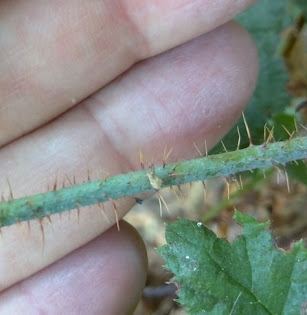Identification of Rubus ursinus vs Rubus armeniacus

A note before I begin: Rubus taxonomy is a mess right now. The native Californian species are pretty well defined, but the European / Asian originating ones (often called "Himalayan Blackberry") don't really fit neatly into our current taxonomic concepts. You will see many different names applied to non-native Rubus on the West Coast, and it's unclear if they should all be considered the same species or several different species, and what features should distinguish them from each other if they are different. Various sources you will run across may refer to these plants as Himalayan Blackberry ( Rubus bifrons ), Armenian Blackberry ( Rubus armeniacus ), European Bramble Complex, Rubus discolor, Rubus fruticosus, Rubus vestitus, and probably a dozen other names as well. The Japson Manual calls these plants R armeniacus, so for the purposes of this guide, that is how I will refer to them. So the most obvious difference between R armeniacus and R ursinus is the shape of
